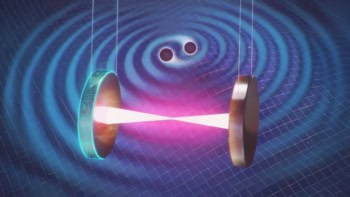A new project to unravel the origin of cosmic rays was given the final go-ahead. A collaboration of 19 nations, including Argentina, Brazil, the US and several European countries, will build the $50m Pierre Auger observatory near Mendoza in Argentina. Some 30 times larger than the biggest existing experiment, the AGASA instrument in Japan, it should provide new insights into the rarest and most energetic cosmic nuclei.
Cosmic rays are particles from outer space that continually bombard the Earth. The nature and origin of cosmic rays with energies below 1015 eV are well understood. However, physicists have no idea of what the highest-energy cosmic rays, which have energies of more than 1020 eV, are made of, or how they are accelerated. These ultra-high-energy cosmic rays strike the Earth only once per km2every century, and they have only been detected on a handful of occasions. Cosmic rays interact with particles in the Earth’s atmosphere, creating an “air shower” of other particles that are eventually detected on the ground. The new observatory, which will consist of about 1600 particle detectors and three fluorescence detectors spread over 3000 km2, should allow researchers to detect between 30 and 50 of the high-energy particles per year.
Alan Watson of Leeds University, co-spokesman for the Pierre Auger project, says that scientists do not understand how cosmic rays can cover the vast distances needed to achieve such high energies. “Any particles that have been accelerated to such energies should have interacted with the cosmic microwave background on their long trip to Earth, ” he says. “A whole slew of exotic physics may be needed to explain cosmic rays, but at the moment we do not have enough data to distinguish between these different theories.”
The observatory should be complete by 2004 and new data could be available in about three to four years’ time. However, it is only one half of a project that Pierre Auger collaborators hope will include the Hi-Res facility, a fluorescence observatory in the US. The combined project would allow researchers to observe the whole sky, but it will be at least four years before construction can begin on a northern observatory, which does not even have funding yet.
“There is no reason in principle why Hi-Res could not be merged into the Pierre Auger project, ” says Pierre Sokolsky, spokesman for the Hi-Res project. “But they have got to show that the techniques work in the south before carrying them out in the north.” Jim Cronin, of the University of Chicago and co-spokesman for the Pierre Auger project, believes that it is short-sighted not to go ahead earlier with the northern observatory. However, he is convinced that it will be built in a few years’ time.



